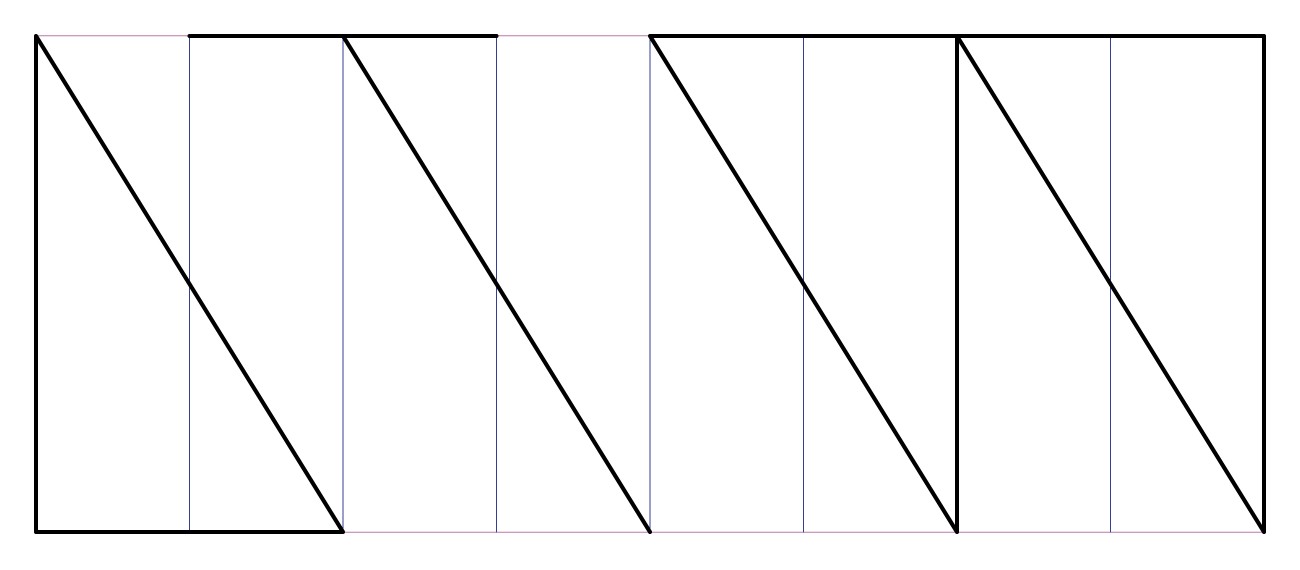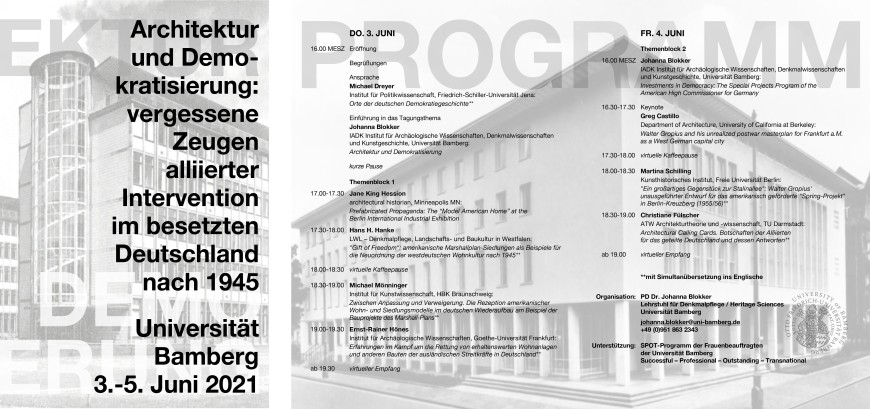Architectural calling cards.Allied embassies and consulates for a divided Germany and German responses
Lecture by Christiane Fülscher at the international conference “Architecture and Democratization in Postwar Germany” at the Otto-Friedrich-University Bamberg
Immediately following the founding of the Federal Republic of Germany and the German Democratic Republic in 1949, work began on the construction of a new Soviet embassy in East Berlin, to be located on the boulevard Unter den Linden not far from the Brandenburg Gate. A short time later, France, Great Britain and the United States erected their own embassies in the provisional national capital Bonn and in the adjacent town of Mehlem; to these were soon added consulates in the state capitals of the West German Länder. Even if these new buildings were to serve first and foremost as platforms for the exercise of diplomacy, and even if they were intended as demonstrations of recognition and respect on the part of the occupation powers toward their respective parts of the divided country, each of those powers also used the visuality and materiality of their representative buildings as haptic instruments of foreign policy, communicating their respective social and political selfimages by means of the architecture. As “architectural calling-cards”, these diplomatic headquarters embodied the state of the art in the architectural design culture of their home countries and communicated this information to the German public. Moreover, not only did the structures built for the diplomatic and consular representatives in both East and West help to set the standard for reconstruction in postwar Germany, but they also provided a set of detailed architectural guidelines for the two Germanies’ own self-representation in other lands. With these buildings’ powerful political symbolism, the task of designing and building embassies only increased the already high level of relevance attributed to architecture in the process of reconstructing state and society in both the Federal Republic and the Democratic Republic after the Second World War, and especially in the struggle for dominance between the two political systems which was also being pursued using architectural means. Thus the adoption of the formal language of the Allied embassies in the two Germanies’ own diplomatic buildings abroad could be seen as a political statement in its own right – and one that manifested the West German policy of non-recognition toward East Germany in architecture, thereby further underscoring the latter’s international isolation.
The talk will be held on June 4, 2021 at 6:30 PM – 7:00 PM MEST (12:30 – 1:00 EST / 9:30 – 10:00 PST). You can register for the event by email: konferenz.denkmalpflege@uni-bamberg.de
For more information about the conference to be held on June 3-5, 2021, please visit the University of Bamberg website.




